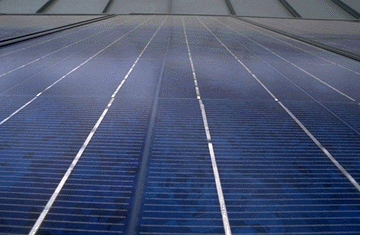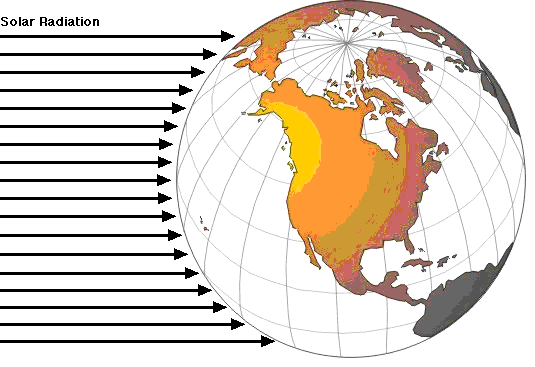ENERGY AND POWER
Energy is the ability to do work. As such, energy is important to all living things in order to maintain life functions from the smallest part of a cell to the organism as a whole. Humans, on the other hand, use energy to modify their environment and do work. Energy is measured by the amount of work it is able to do. This is commonly measured in joules (J). Energy has two forms, kinetic energy and potential energy.
Work can be done at different rates. The faster work is done, the more energy is used. Because of this, the rate at which energy is used to do work needs to be measured. Power is the rate of doing work. Work is measured in units called watts (W) which are equal to the number of joules of work per second. This means that energy can be expended at different rates depending on how fast the work needs to be done. Some devices use lots of power to accomplish a task (these are generally refered to as "powerful") while others use much less. Think of a race car verses an economy model. They both can travel the same distance, but the race car does it much faster since it is capable of expending much more energy in much less time.
Electrical power is important to humans for doing work. Because of it, we have many modern conveniences. Electrical power is measured in units called kilowatt-hours.
RENEWABLE ENERGY
In order to create a sustainable existence for the future generations, a safe and reliable energy source must be available. As petroleum supplies run low and traditional fuel sources grow scarce, new and environmentally conscious will need to replace expendable, or non-renewable forms. Renewable energy is an environmentally responsible energy source
Different renewable energy sources include solar radiation, geothermal energy, wind power, and tidal power. These have all been put to use to some degree in various parts of the world. In order to be a renewable energy, the source must be relatively unlimited or able to be easily and effortlessly replaced. This means that it will not "run out" or require expenditure of resources to regenerate. Furthermore, a renewable energy source will leave behind little waste that pollutes. Solar, wind, geothermal, biofuels, and hydro-electric are examples of the possible future of renewable energy for human use.
SOLAR ENERGY
Use of solar energy extends far back through history probably beginning with the first organism to warm up by sunning itself. With today's energy demands constantly rising against the use of limited resources, it is becoming necessary to investigate non-petroleum energy resources. As a renewable energy source, solar energy must only be captured and put to good use.
Energy from the sun not only heats Earth, but provides the energy that circulates the oceans and the atmosphere. As solar radiation hits Earth, three different things happen: some energy escapes back into space (albedo), some is absorbed by the atmosphere, and some is absorbed by the surface of the planet. For most applications, only the energy that actually reaches the ground is of interest to humans for daily energy use.
The greatest output of solar energy is in the visible spectrum with approximately 95% of available energy on Earth falling into the visible range (this is the light we can see).
One way to use solar energy is to heat things. This involves absorbing solar radiation as it strikes a surface and using the heat for something useful. Cooking, hot water heating, detoxification of chemicals, and heating of buildings are examples of solar thermal uses.
Another way to use solar energy is to convert it into electricity for human use. This is accomplished through technology known as photovoltaic cells (Figure 1). Many photovoltaic cells are used in panels and arrays to collect solar energy and power things electrically. Satellites and space probes use this technology to provide a source of electrical energy far from Earth. Also, people living in remote areas can have electrical power by using these.

FIGURE 1. Photograph of photovoltaic cells. PV cells convert solar radiation into electrical energy.
INSOLATION
Solar energy has great potential for human use, but it is dependent on the availability of sunlight and the amount hitting surfaces in a given area. This is called insolation and varies greatly from place to place. Geographic location, cloud cover, and obstructions can all influence the amount of sunlight available in a specific area. Between the Tropic of Cancer and the Tropic of Capricorn, the sun can be found directly overhead (90°) for at least part of the year. This is not the case as one travels north or south toward the poles. The further from the equator someone is, the lower in the sky the sun will be (Figure 2).

FIGURE 2. Solar radiation strikes the Earth at different angles due to the 23.5 ° tilt of the planet. Different locations on the planet also receive sunlight at different angles due to their latitude (location from the equator).
Solar radiation striking a surface can be absorbed or reflected. The more directly the light hits the surface, the more energy will be absorbed by that surface. Because the Earth is tilted 23.5° on its axis, the angle of incidence for the sun varies depending on both season and latitude.
ABSORPTION AND REFLECTION
When solar radiation hits a surface, two things can happen: the energy can be absorbed or reflected. The amount of energy imparted to a system depends on the transfer of energy through absorption. The solar energy absorbed is what we can use to heat things, generate electricity, or perform other tasks. Energy that is reflected bounces off of the surface and is not captured; thus, reflection does not contribute energy that we can use. Maximizing the absorption of solar radiation is an important goal of scientists and engineers designing devices to capture solar energy.
Different colors, textures, and materials have different characteristics of absorbing solar energy. The greater the light absorption of a surface, the more energy is absorbed. "Dark" colors that do not reflect much light are better at capturing solar energy. This means a flat black surface will absorb more energy than a shiny white surface.
The colors of the visible spectrum are arranged by wavelength and form what we call "the colors of the rainbow" (Figure 3). Light energy is carried in discreet packages of energy called photons. Photons of different wavelengths of light have different amounts of energy. A spectrum is all of the different wavelengths viewed continuously.

FIGURE 3. Color spectrum of visible light. When we see a color, our eyes are recieving the light that is reflected from a surface, not the colors that are absorbed. The more light that is absorbed, the less that is reflected.
Author: Kevin Lindauer School: Baker Middle School, 574 W. 6th Ave., Denver, CO 80204 Created: September 9, 1998 - Updated: December 9, 1998 URL: /ntep/f98/projects/